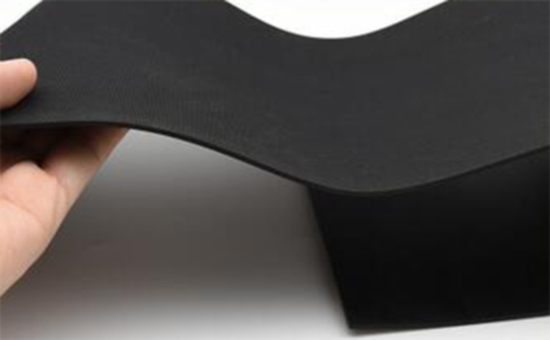
The nitrile rubber prepared by emulsion polymerization of butadiene and acrylonitrile contains a large number of highly polar cyano groups, which are typical oil-resistant rubbers. They can be used for a long time in petroleum solvents to maintain good performance; nitrile rubber itself Corrosion resistance is superior to styrene-butadiene rubber and oil-resistant neoprene, so it is widely used in rubber lining production. Nitrile reclaimed rubber processed from nitrile water-based rubber and waste nitrile rubber products is also often used to replace nitrile rubber for rubber lining production and reduce costs.
When using a nitrile rubber or a nitrile reclaimed rubber to produce a rubber lining, a reasonable choice of the compounding agent can further improve the rubber lining comprehensive index. Nitrile rubber / reclaimed rubber anti-corrosion rubber lining formula generally chooses sulfur as a vulcanizing agent, together with carbon black, zinc oxide, clay, tricresyl phosphate, rubber operating oil and anti-aging agent.
Studies have shown that when sulfur is used as the vulcanizing agent for the nitrile rubber lining, the chemical resistance of the nitrile vulcanizate can be further improved by increasing the amount of sulfur as much as possible under the premise that the various indexes (mainly hardness and physical and mechanical properties) meet the demand. When zinc oxide is used, since zinc oxide is easily corroded by alkaline substances, it is necessary to avoid zinc oxide in a rubber lining that has been worked in an alkaline medium for a long time.
For the reinforcing filling system of nitrile rubber lining, it is generally recommended to use carbon black, clay, barium sulfate, talc powder and the like which are not easily corroded, corroded, and contain no electrolyte impurities. Among them, furnace black and clay are the most common.
Tricresyl phosphate is a plasticized product commonly used in the rubber and plastic products industry. It is a colorless or light yellow transparent oily liquid under normal temperature and pressure. It has good compatibility with rubber, wear resistance, weather resistance, pollution resistance, corrosion resistance and protection. Mildew, flame retardant, used together with rubber processing oil as a softening plasticizing system for nitrile rubber/recycled rubber lining can improve the processing performance of rubber compound and improve the comprehensive performance of nitrile rubber lining.
Rubber anti-aging agent A not only has good protection against thermal oxygen, flexing, weathering, fatigue aging, but also can significantly inhibit the harmful effects of harmful metals on rubber; general-purpose anti-aging agent A and general-purpose rubber anti-aging agent D can be significantly delayed Nitrile rubber lining aging time, extending service life.
The nitrile reclaimed rubber retains the basic performance characteristics of nitrile rubber. It can generally replace some nitrile rubber in the nitrile rubber lining production formula to reduce the production cost. Because of the serious difference in the quality of the nitrile reclaimed rubber on the market, rubber The lining has strict requirements on all rubber materials. Therefore, when rubber products manufacturers choose to replace the rubberized rubber lining reclaimed rubber for nitrile rubber, they must choose products that are close to the lining index, cooperate with the regular reclaimed rubber factory, and adjust the formula reasonably. The type and amount of each compounding agent.
Exclusive original article [commercial authorization] reprint, excerpt and excerpt in any form are prohibited without written authorization. Focus on Hongyun rubber: learn the process formula and raw material technology of producing rubber products from recycled rubber to help you reduce costs and increase profits